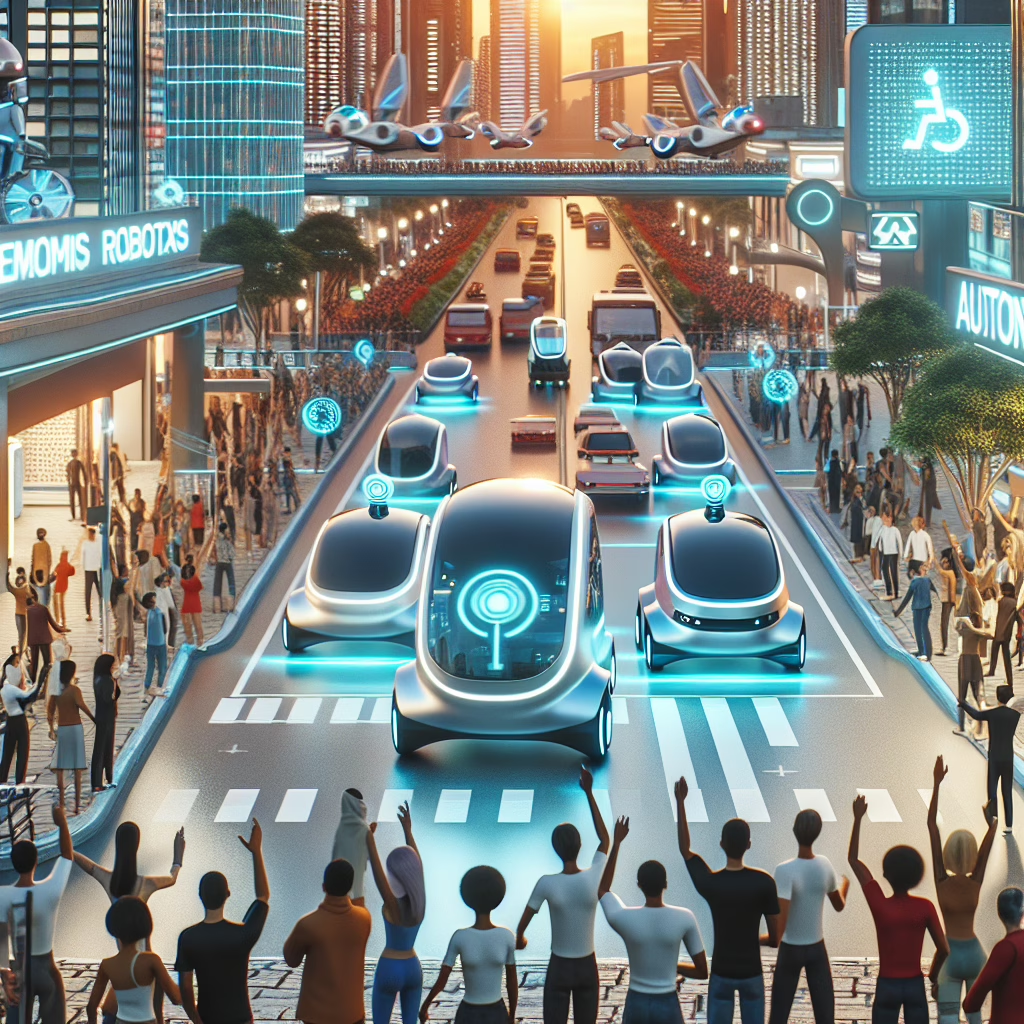Imagine a world where you hop into a car that drives itself while you enjoy your morning coffee, free from the stress of traffic. Sounds like something straight out of a sci-fi movie, right? Well, buckle up because VW and Uber are gearing up to make this dream a reality with their ambitious plans for autonomous robotaxis. By 2026, we could see these self-driving wonders whizzing around cities like Los Angeles, transforming our commutes into a hassle-free experience where pressing a button summons your ride.
The Rise of Autonomous Robotaxis
The concept of autonomous robotaxis isn’t just about cutting-edge technology; it’s about reshaping urban mobility on a grand scale. VW’s Moia project is set to take the lead in this revolution. This initiative aims to combine electric vehicle technology with sophisticated self-driving capabilities. What does it mean for the average commuter? Less time wasted in gridlock and more opportunities to binge-watch your favorite shows on your phone!
But let’s not forget the playful side of this transformation. Picture yourself ordering a robotaxi through an app, only to have it arrive with a quirky personality. Perhaps it even offers you a selection of snacks for the ride. Who wouldn’t want their own personal chauffeur who occasionally tells dad jokes?
What Makes Moia Special?
The Moia project is not just another addition to the already crowded market of ride-sharing services. Its unique design emphasizes maximizing passenger comfort and efficiency. VW has envisioned a spacious interior tailored for relaxation where passengers can stretch out, work on their laptops, or even hold impromptu dance parties (let’s admit, we all know that’s bound to happen). With space for multiple passengers, it’s perfect for sharing rides with friends or making new acquaintances.
Additionally, these autonomous robotaxis are designed with sustainability in mind. VW plans to implement electric vehicles that will significantly contribute to reducing urban emissions. So not only will you travel in style, but you’ll also feel good about saving the planet—one ride at a time!
The Tech Behind the Magic
You might be wondering how all this innovation works. It’s all thanks to advanced algorithms and artificial intelligence that allow these vehicles to navigate busy streets without human intervention. The technology includes high-quality sensors that detect obstacles and predict traffic patterns, making it infinitely safer than attempting to parallel park during rush hour.
Furthermore, the collaboration between VW and Uber merges two powerhouses in the automotive and tech industries. This strategic partnership enables them to share resources and expertise, accelerating the development of autonomous driving technology.
The Road Ahead: Challenges & Opportunities
While the future looks promising for autonomous robotaxis, several challenges lie ahead. Regulatory hurdles, public acceptance, and safety concerns are just a few bumps on the road to achieving full deployment. However, if history has taught us anything, it’s that innovation consistently triumphs over obstacles.
As we approach 2026, cities like Los Angeles may find themselves at the center of this exciting transformation. Can you imagine cruising down Sunset Boulevard in a self-driving car? It’s increasingly becoming a part of our reality.
Your Thoughts on Autonomous Robotaxis?
As we look forward to this futuristic vision becoming a reality, we want to hear from you! Are you excited about hopping into an autonomous robotaxi, or do you prefer the comfort and control of driving yourself? Share your thoughts in the comments below!
Before we wrap up this fascinating journey into the future, let’s take a moment to thank The Verge for their insightful article that inspired today’s discussion. Their excellent reporting keeps us well-informed about these amazing developments!
Additional Insights into Volkswagen and Uber’s Collaboration
The partnership between VW and Uber signifies not just an automotive evolution, but an entire shift in how we perceive transportation. With the climbing air pollution levels and increased traffic congestion in urban areas, the introduction of autonomous robotaxis can play a crucial role in alleviating these issues. Here are some additional insights into this collaboration:
- Enhanced Safety Features: The implementation of robust safety protocols is crucial for public acceptance.
- Integration with Public Transport: These robotaxis could complement existing public transportation systems, providing a seamless travel experience.
- Cost Efficiency: Shared rides in an autonomous setting could significantly reduce travel costs, making it attractive to a larger demographic.
As VW and Uber work towards their 2026 goals, innovation is set to transform how we interact with our urban environments, making transportation smarter, greener, and more enjoyable for everyone.

